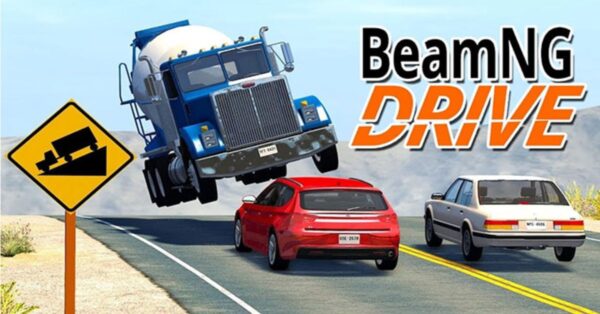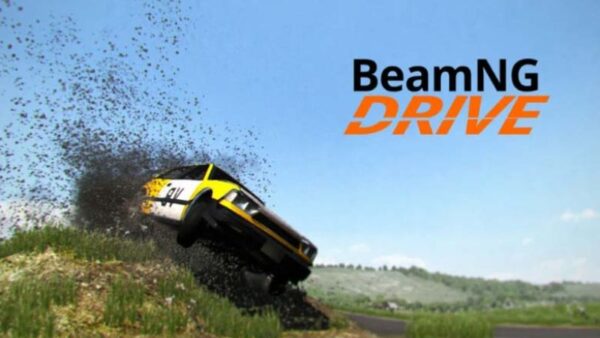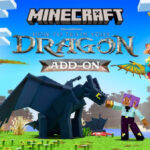Popular Now
Introduction
BeamNG.drive isn’t just another driving game—it’s a detailed, physics-based open-world driving sandbox with some of the most realistic soft-body crash physics in the gaming world. Whether you're just getting started or looking to push the limits of what the game can do, this guide covers everything you need to know. From beginner tips to advanced vehicle tuning, scenarios, mods, and system optimization, you'll find all the essentials here to elevate your experience behind the digital wheel.
1. Understanding the Basics: What Is BeamNG.drive?
Before you dive into the gameplay, it’s important to understand what BeamNG.drive really is. Developed by BeamNG GmbH, it’s a driving simulator that prioritizes realism above all. Every crash, tire skid, and vehicle deformation is powered by real-world physics calculations.
BeamNG.drive is an open-ended sandbox game. Instead of a structured campaign or career progression, you get a playground where you spawn vehicles, crash them, test parts, explore maps, and even build your own scenarios. It’s like a car crash lab blended with a driving simulator.
What Makes BeamNG.drive Unique
-
Hyper-realistic soft-body physics engine
-
Huge open modding community
-
Wide selection of vehicles and environments

2. Getting Started: First Steps for Beginners
When you first launch the game, the interface and options can feel overwhelming. That’s normal. Start by selecting a simple map like "Gridmap" or "Small Island"—they're designed for learning and experimentation.
Use the built-in tutorial to get familiar with the controls, user interface, and vehicle spawning system. BeamNG.drive doesn't hold your hand like traditional racing games, so don’t expect guided missions. It’s all about exploring and learning by doing.
Key Initial Settings
-
Configure your controls: Set up your keyboard, controller, or steering wheel.
-
Optimize graphics: Adjust based on your PC’s specs.
-
Physics setting: Keep it on "Real-Time" for the best experience.
3. Mastering the Controls and Interface
Understanding the controls early on will make everything else easier. BeamNG has separate controls for driving, camera movement, and simulation tools.
Whether you’re using a keyboard, gamepad, or racing wheel, assign your throttle, brake, steering, and gear shift to comfortable buttons. Manual transmission adds realism, so try using it when you're ready.
Important Camera Modes
-
Orbit Camera: Default third-person view
-
Driver Camera: First-person cockpit view
-
Free Camera: Move around the scene with full control (great for setups and exploration)
Some useful shortcuts:
-
CTRL+E: Open the vehicle selector
-
CTRL+R: Reset your current vehicle
-
SHIFT+C: Activate free camera mode
4. Exploring Maps and Environments
BeamNG.drive comes with a variety of maps—each with its own terrain, roads, and testing challenges. Learning how your car behaves in different environments is key to mastering the game.
Best Maps for Beginners
-
Gridmap: Flat surfaces and ramps for testing
-
East Coast USA: Forest roads, towns, and highways
-
Italy: A scenic mix of coastal roads and small towns
Tips for Exploring Maps
-
Use the free camera to survey areas before driving
-
Combine weather, time-of-day, and surface types for realistic challenges
-
Download community-made maps to expand your world
5. Learning Vehicle Behavior and Damage Physics
Each car in BeamNG.drive has unique handling characteristics. You’ll notice differences based on weight distribution, drivetrain (FWD, RWD, AWD), suspension type, and tire grip.
Spend time experimenting with different vehicles. Take note of how they respond to braking, cornering, high-speed impacts, and terrain changes. The beauty of BeamNG is that the damage system isn’t visual fluff—it’s a result of real-time soft-body physics.
Key Factors to Understand
-
Drivetrain type: FWD cars understeer, RWD can oversteer, AWD gives better traction
-
Suspension stiffness: Affects control and comfort on different terrains
-
Tire pressure: Lower for off-road, higher for racing surfaces
6. Playing Scenarios and Campaigns
While BeamNG is sandbox-based, it does feature pre-built scenarios and campaigns that challenge your driving skills.
Scenarios include time trials, crash recovery, deliveries, and police chases. Campaigns like "Driver's Training" or "Senseless Destruction" offer goal-based gameplay, which is a fun way to learn different aspects of driving and vehicle control.
Recommended Beginner Scenarios
-
Basic Driver’s Training
-
Delivery runs
-
Police pursuit or evasion missions
-
Off-road climbing challenges
Scenarios are a great break from the sandbox and also a great way to learn driving physics in real situations.
7. Using the Vehicle Customization and Tuning Tools
Vehicle customization in BeamNG isn’t just cosmetic—it’s all about performance. You can tweak just about everything, from tire pressure and suspension stiffness to engine components and gear ratios.
Use the Vehicle Configurator (CTRL+W) to replace or upgrade parts like engines, differentials, turbochargers, brakes, and more. Want a supercharged minivan or a stripped-down race car? You can build it.
Tuning Tips
-
Lower tire pressure for better off-road grip
-
Use stiffer suspension for high-speed handling
-
Adjust gear ratios for faster acceleration or better fuel efficiency
BeamNG lets you experiment endlessly, so try different setups and test them on various tracks.

8. Installing and Managing Mods
The BeamNG community has created thousands of mods—vehicles, maps, skins, scenarios, and sound packs—that greatly enhance the game.
You can browse and install mods directly from the in-game “Repository,” or download from sites like BeamNG.com or the forums.
How to Install Mods
-
Use the in-game Repository for one-click installs
-
Or manually install mods by placing ZIP files into your "Documents/BeamNG.drive/mods" folder
-
Always check for mod compatibility with your game version
Must-Try Mods
-
Gavril Vertex NA2: Highly customizable modern sedan
-
Realistic Police Pack: Authentic emergency vehicles
-
CrashHard 8x8 BigRig: Extreme durability for serious crashes
9. Using the World Editor and Node Grabber
BeamNG gives you powerful creative tools beyond driving. The World Editor (F11) lets you modify terrain, place objects, or build new maps.
If you’re into designing custom race tracks, ramps, or obstacle courses, this tool is your playground.
The Node Grabber (Shift+N) allows you to manually interact with your vehicle’s parts—pulling bumpers, bending axles, or attaching trailers—ideal for experiments and detailed setups.
World Editor Features
-
Edit terrain height and textures
-
Add traffic lights, road signs, or props
-
Create custom spawn points or camera setups
10. Performance Optimization and Troubleshooting
BeamNG.drive is demanding because of its complex physics engine. To get the smoothest experience, especially with multiple vehicles or detailed maps, you may need to tweak performance settings.
Optimization Tips
-
Lower shadow quality and object detail
-
Use "Simplified Collision Physics" for AI vehicles
-
Turn off dynamic reflections for a major FPS boost
Common Issues and Fixes
-
Crashing or freezing? Remove outdated mods
-
Controller not detected? Reconfigure controls in the input settings
-
Glitchy vehicles? Use CTRL+R or reload the map
Also, keep your game updated regularly. BeamNG developers push frequent updates that add content and fix bugs.
Conclusion
BeamNG.drive is one of the most rewarding driving simulators out there—offering unmatched realism and creative freedom. Whether you're here to race, crash, test, build, or mod, the game gives you all the tools you need to turn your ideas into simulations.
With this guide, you now have the knowledge to get started and keep progressing. Explore maps, experiment with vehicle tuning, try new mods, and don’t be afraid to crash spectacularly. After all, that’s half the fun.


















